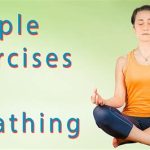Mastering the Art of Yoga Breathing: Techniques, Benefits, and Practical Applications
Yoga breathing (also known as Pranayama) is an essential aspect of yoga practice that offers a multitude of benefits for both mental and physical well-being. Whether you’re a beginner or an experienced yogi, understanding and mastering these breathing techniques can significantly enhance your practice, promoting better focus, relaxation, and overall health.
Introduction
Breathing is something we do unconsciously every second of every day, yet controlled breathing has profound effects on our health. In yoga, breathing techniques, known as Pranayama, are foundational practices that help regulate the body’s energy, calm the mind, and facilitate physical postures. Mastering the art of yoga breathing is not just about improving lung capacity but also about balancing the body and mind to achieve a deeper state of well-being. This article delves into the key concepts, history, current practices, and practical applications of yoga breathing techniques. You’ll also learn about ethical considerations, limitations, and future research areas in this evolving field.
Key Concepts
- Pranayama: The control of breath, which literally translates to “extension of life force.” It’s a core component of traditional yoga practice.
- Nadi Shodhana: Also known as alternate nostril breathing, this technique is believed to balance the hemispheres of the brain and improve mental clarity.
- Ujjayi Breathing: A slow, controlled breath that creates a sound resembling ocean waves, which aids concentration and helps to build internal heat.
- Kapalabhati: A forceful breathing technique that involves rapid exhalation followed by passive inhalation, used to cleanse the respiratory system and energize the body.
- Bhramari: Known as the “humming bee breath,” this technique involves exhaling while making a humming sound, promoting relaxation and alleviating stress.
Historical Context
The practice of Pranayama has roots in ancient Indian traditions, primarily in the spiritual and philosophical teachings of Hinduism. Historically, it was believed that controlling the breath could help control the mind and emotions. Texts such as the Yoga Sutras of Patanjali and the Hatha Yoga Pradipika discuss breathing practices as a gateway to spiritual liberation. Over time, yoga breathing techniques were integrated into daily life, believed to promote longevity and balance the body’s energy systems.
In modern times, research has begun to catch up with ancient wisdom, recognizing the physiological benefits of these breathing practices. Today, Pranayama is a vital aspect of yoga training, focusing not only on physical health but also on enhancing mindfulness and emotional balance.
Current State Analysis
Currently, yoga breathing techniques are gaining global popularity due to their adaptability and accessibility. From fitness centers to clinical settings, Pranayama is recognized for improving mental clarity, reducing stress, and promoting emotional resilience. As people seek holistic methods to address both physical and mental well-being, yoga breathing techniques are increasingly seen as powerful tools for achieving this balance.
However, there is still some debate within the scientific community about the extent of the benefits of Pranayama. While anecdotal evidence and small-scale studies have shown positive effects, large-scale, rigorous studies are still needed to conclusively determine the mechanisms behind these benefits. Additionally, there is concern about misappropriation of these traditional practices in contexts that may strip them of their cultural significance.
Practical Applications
Yoga breathing techniques can be applied in various settings, including:
- Meditation and Mindfulness: Incorporating controlled breathing into meditation helps focus the mind and achieve a deeper meditative state.
- Stress Management: Practices like Bhramari or Nadi Shodhana are particularly effective in reducing anxiety and promoting calmness.
- Physical Activity: Techniques like Ujjayi breathing are often used in conjunction with yoga postures (asanas) to improve stamina and focus during physical exercise.
- Clinical Therapy: In therapeutic settings, yoga breathing has been used to help manage conditions like hypertension, asthma, and even PTSD.
- Everyday Stressors: Simple breath control techniques can be used to manage daily stress, helping individuals to respond to challenges with greater resilience.
Case Studies
| Technique | Case Study Example | Outcome |
|---|---|---|
| Ujjayi Breathing | A yoga practitioner with chronic anxiety began incorporating Ujjayi breathing into her daily routine. | Reported decreased anxiety levels and improved focus over a 6-month period. |
| Nadi Shodhana | A university student used alternate nostril breathing to manage exam stress. | Experienced reduced stress and improved academic performance. |
| Kapalabhati | An individual with mild depression used Kapalabhati breathing in combination with yoga poses. | Reported increased energy levels and a significant mood improvement after 8 weeks. |
| Bhramari | A business executive incorporated Bhramari into her pre-meeting routine to improve concentration. | Noticed improved clarity of thought and reduced stress in high-pressure situations. |
Stakeholder Analysis
Yoga breathing impacts a variety of stakeholders, each with unique considerations:
- Healthcare Professionals: Interest in yoga breathing for its potential to improve patient outcomes in both mental and physical health.
- Yoga Practitioners: Benefits from enhanced breath control, which improves the depth and focus of their practice.
- Mental Health Advocates: Leverage breathing techniques as non-invasive tools to help manage stress, anxiety, and depression.
- Fitness Instructors: Teach these techniques as part of holistic wellness programs, recognizing their benefits in improving physical performance.
- Cultural Preservationists: Concern about preserving the integrity and original intent of these ancient practices as they spread globally.
Implementation Guidelines
For those looking to incorporate yoga breathing into their practice, consider the following guidelines:
- Start with basic techniques like Ujjayi or Nadi Shodhana before progressing to more advanced practices like Kapalabhati.
- Practice in a quiet, comfortable environment where you can focus on your breath without distractions.
- Begin with short sessions (5-10 minutes), gradually increasing the duration as you become more comfortable with the techniques.
- Combine breathwork with meditation or physical asana practice for a more holistic experience.
- Consult a certified yoga instructor to ensure proper technique, especially if you’re dealing with specific health conditions.
Ethical Considerations
While yoga breathing techniques offer numerous benefits, it is essential to practice them with respect for their cultural and historical origins. The global popularity of yoga has raised concerns about cultural appropriation and commodification. Practitioners and instructors alike should strive to honor the traditions from which these techniques emerged, ensuring that they are taught and practiced in ways that respect their spiritual and philosophical underpinnings.
Limitations and Future Research
Despite the growing popularity of yoga breathing, there are still several limitations in the current body of research:
- Lack of large-scale studies: Most studies on yoga breathing are small and not widely generalizable.
- Cultural sensitivity: As yoga breathing techniques spread globally, there is a risk of losing the cultural and spiritual context in which they originated.
- Over-simplification: Some techniques may be oversimplified in Western contexts, diminishing their effectiveness and misrepresenting their purpose.
- Health risks: Certain techniques, like Kapalabhati, may not be suitable for individuals with specific medical conditions, such as hypertension or respiratory disorders.
Future research should focus on conducting large-scale clinical trials to better understand the physiological mechanisms behind the benefits of yoga breathing. Additionally, exploring how these techniques can be adapted for different populations, such as children or the elderly, would be a valuable area of study.
Expert Commentary
Yoga breathing is not just a practice for physical health but a bridge between the mind, body, and spirit. As our understanding of the connection between breath and mental well-being deepens, it is clear that Pranayama offers a wealth of benefits for individuals from all walks of life. By respecting its origins and staying informed about the latest research, practitioners can continue to unlock the full potential of these powerful techniques. Whether you are seeking stress relief, better focus, or spiritual growth, mastering the art of yoga breathing can be a transformative journey.








